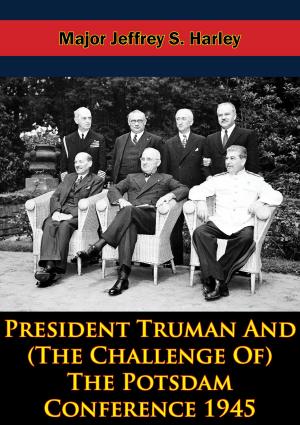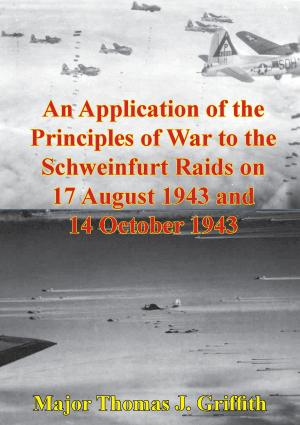Combined Special Operations In World War II
Nonfiction, History, Germany, European General, Military, United States| Author: | Captain James C. Nixon | ISBN: | 9781782897118 |
| Publisher: | Lucknow Books | Publication: | August 15, 2014 |
| Imprint: | Lucknow Books | Language: | English |
| Author: | Captain James C. Nixon |
| ISBN: | 9781782897118 |
| Publisher: | Lucknow Books |
| Publication: | August 15, 2014 |
| Imprint: | Lucknow Books |
| Language: | English |
This study is an historical analysis of combined special operations units in the European Theater during World War II. The study examines the Dieppe Raid Force, the First Special Service Force, and the Jedburghs to determine common strengths and weaknesses in organization, training, command and control, and effectiveness. The study also analyzes the adequacy of current United States combined and special operations doctrine based on the results of the historical analysis.
The study concludes that current U.S. doctrine does not adequately address the organization, training, and command and control of combined special operations. Current doctrine provides sufficient strategic guidance, but requires supporting doctrine at the operational and tactical level. One of the contributing factors is an over-reliance on Operation DESERT SHIELD/DESERT STORM.
The study provides planning considerations that should be incorporated into current combined doctrine. The historical examples illustrate the criticality of establishing clear goals and objectives and the use of training to assist in achieving unity of effort. The study also identifies centralized control, clear communications, and coordination as fundamental to successful command and control of combined special operations units.
This study is an historical analysis of combined special operations units in the European Theater during World War II. The study examines the Dieppe Raid Force, the First Special Service Force, and the Jedburghs to determine common strengths and weaknesses in organization, training, command and control, and effectiveness. The study also analyzes the adequacy of current United States combined and special operations doctrine based on the results of the historical analysis.
The study concludes that current U.S. doctrine does not adequately address the organization, training, and command and control of combined special operations. Current doctrine provides sufficient strategic guidance, but requires supporting doctrine at the operational and tactical level. One of the contributing factors is an over-reliance on Operation DESERT SHIELD/DESERT STORM.
The study provides planning considerations that should be incorporated into current combined doctrine. The historical examples illustrate the criticality of establishing clear goals and objectives and the use of training to assist in achieving unity of effort. The study also identifies centralized control, clear communications, and coordination as fundamental to successful command and control of combined special operations units.





![Cover of the book Notes of a Camp-Follower on the Western Front [Illustrated Edition] by Captain James C. Nixon](https://www.kuoky.com/images/2015/november/300x300/9781786255198-azK2_300x.jpg)
![Cover of the book Robert Bacon — Life And Letters [Illustrated Edition] by Captain James C. Nixon](https://www.kuoky.com/images/2014/june/300x300/9781782891710-redE_300x.jpg)

![Cover of the book Love Letters From An Anzac [Illustrated Edition] by Captain James C. Nixon](https://www.kuoky.com/images/2014/august/300x300/9781782892571-pKQI_300x.jpg)
![Cover of the book Tail Gunner Takes Over [Illustrated Edition] by Captain James C. Nixon](https://www.kuoky.com/images/2016/july/300x300/9781786259295-N9bc_300x.jpg)





